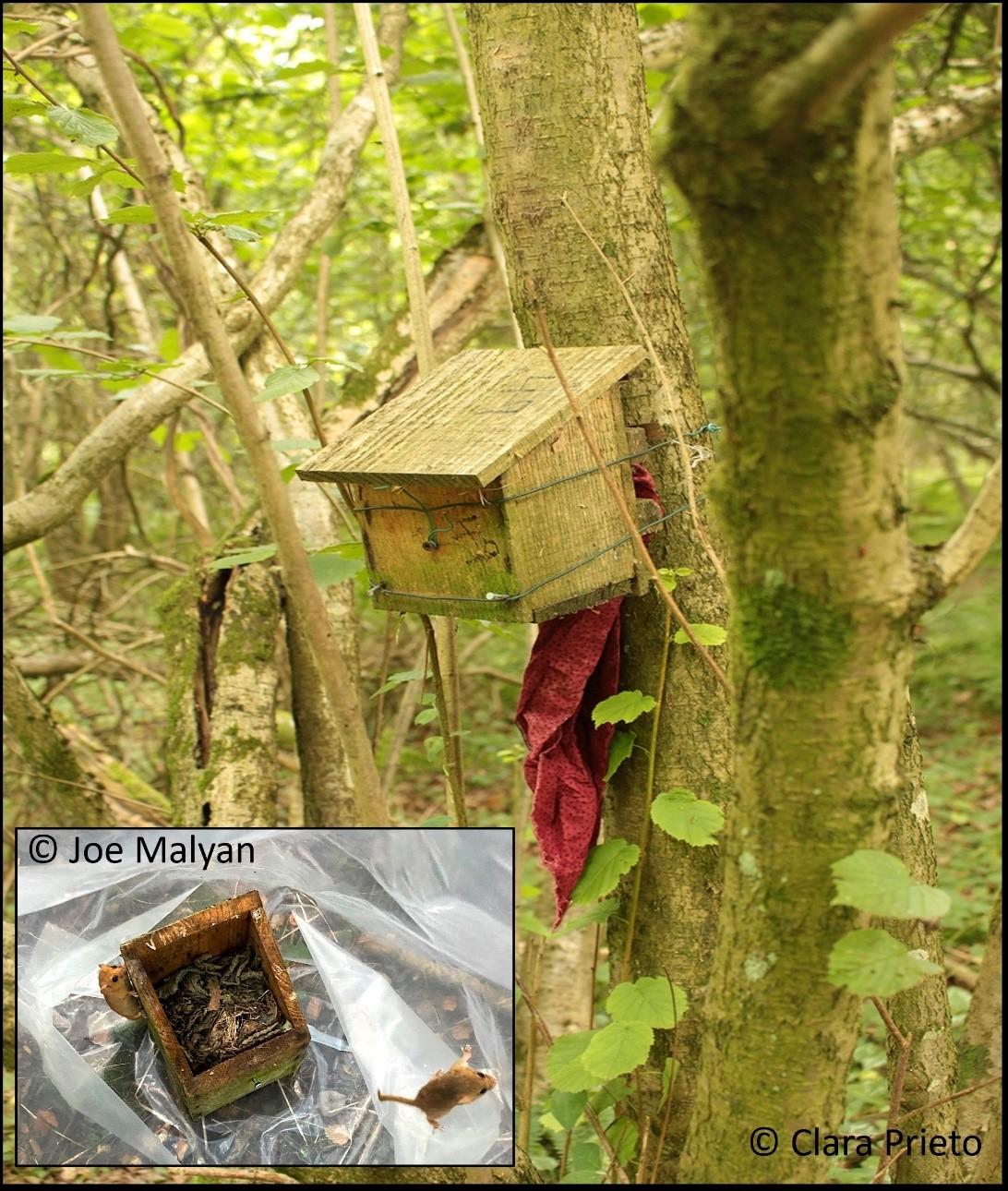Submitted by editor on 20 May 2024.
An artificial nestbox installed to monitor and mitigate impacts to hazel dormice (Muscardinus avellanarius) and two hazel dormice (inset) found during one of our monitoring surveys (photo credits Clara Prieto and Joe Malyan).
Hazel dormice are one of the UK’s rarest mammal species, their population dwindling since 2000. Artificial nestboxes are primarily used to find and monitor hazel dormice, but also used to mitigate the loss of natural habitat caused by increased pressures from agriculture, forestry work and urban expansion. To maximise the chances for these artificial nestboxes to be used by hazel dormice, it is crucial that site selection is carefully considered. Whilst habitat preferences for this species have been well documented, we identified a lack of knowledge surrounding microhabitat variables around occupied and non-occupied nestboxes and this became the focus of Joe’s Masters project at the University of Reading in the UK.
Our paper uses a machine learning approach called Random Forest regression to provide detailed insight into nest box selection by hazel dormice. We highlight the benefits of this statistical approach that can disentangle the effects of many potential predictors even with relatively small numbers of observations, and illustrate steps for good practise on its application. The code used to analyse the data (in the R programming language) is available online, and we hope may be useful to those wanting to apply Random Forest modelling.
Hazel dormouse found during monitoring surveys of artificial nestboxes in a UK woodland (Photo credit Joe Malyan). NOTE: handling dormice without gloves, as shown here, is no longer permitted following Covid-19 IUCN guidelines.
Understanding microhabitat features that could affect nestbox occupancy can aid conservationists to place and manage nestbox sites. If more dormice use and benefit from provided artificial nestboxes, especially in habitats where finding natural nests is low, we will be able to improve population monitoring for this species and ensure this beautiful creature remains part of our native fauna.
Hazel dormouse found inside an artificial nestbox during monitoring surveys in our UK woodland study site. When animals are found during survey if possible sex and age are recorded, also noting any concerns regarding condition (Photo credit Joe Malyan).
Categories:



